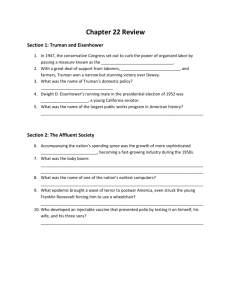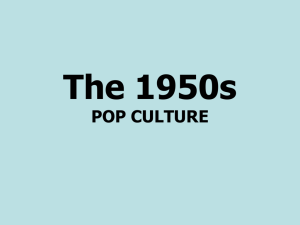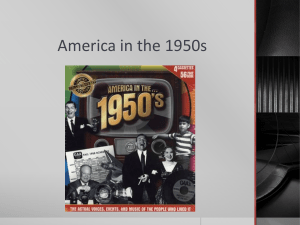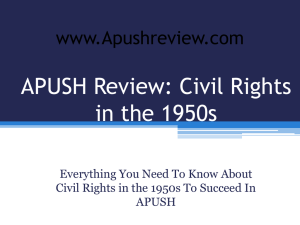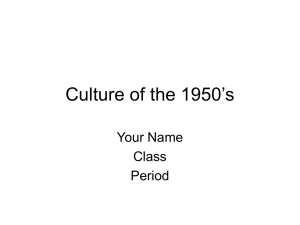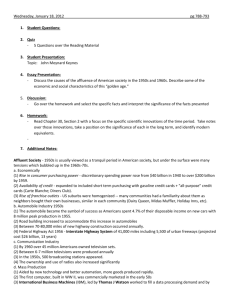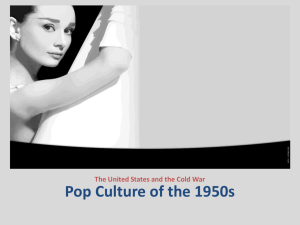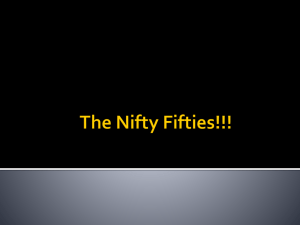1950s Quiz
advertisement
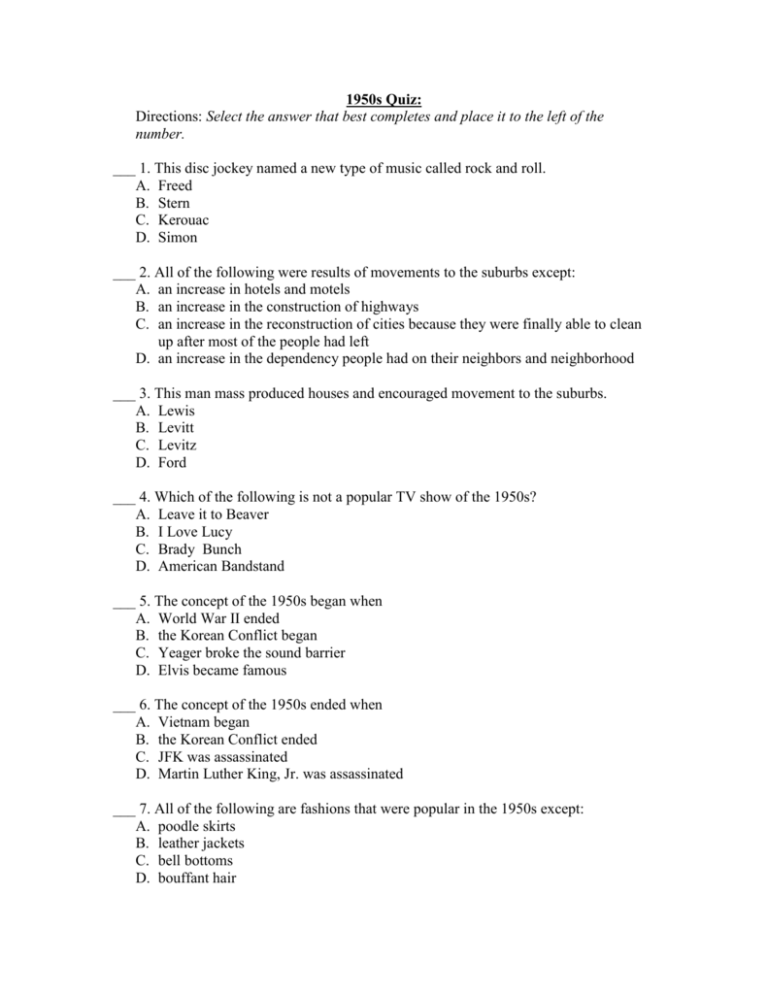
1950s Quiz: Directions: Select the answer that best completes and place it to the left of the number. ___ 1. This disc jockey named a new type of music called rock and roll. A. Freed B. Stern C. Kerouac D. Simon ___ 2. All of the following were results of movements to the suburbs except: A. an increase in hotels and motels B. an increase in the construction of highways C. an increase in the reconstruction of cities because they were finally able to clean up after most of the people had left D. an increase in the dependency people had on their neighbors and neighborhood ___ 3. This man mass produced houses and encouraged movement to the suburbs. A. Lewis B. Levitt C. Levitz D. Ford ___ 4. Which of the following is not a popular TV show of the 1950s? A. Leave it to Beaver B. I Love Lucy C. Brady Bunch D. American Bandstand ___ 5. The concept of the 1950s began when A. World War II ended B. the Korean Conflict began C. Yeager broke the sound barrier D. Elvis became famous ___ 6. The concept of the 1950s ended when A. Vietnam began B. the Korean Conflict ended C. JFK was assassinated D. Martin Luther King, Jr. was assassinated ___ 7. All of the following are fashions that were popular in the 1950s except: A. poodle skirts B. leather jackets C. bell bottoms D. bouffant hair ___ 8.The decade of the 1950s actually encompasses 1947-1963 for most historians and began with _____________________ and ended with the ____________ assassination. A. the military being desegregated/Nixon B. the sound barrier being broken/Kennedy C. major league baseball being desegregated/Kennedy D. the Harlem Renaissance/Reagan ___ 9. He served as governor of CA and desegregated their schools and then helped to decide Brown v. Board of Education case in 1954; he was __________________. A. Earl Warren B. Hiram Revels C. Dwight Eisenhower D. Richard Nixon ___ 10. By 1960, it is accepted that over _______% of Americans would be classified as middle class. A. 40 B. 50 C. 60 D. 70 ___ 11. “Little Boxes” ___ 12. homogeneous ___ 13. Feminine Mystique ___ 14. “Leave it to Beaver” ___ 15. “I Love Lucy” ___ 16. On the Road ___ 17. Beatniks ___ 18. Jonas Salk ___ 19. Margaret Saner ___ 20. “white collar” a. provided kids with a wholesome example of a nuclear family b. had the same idea of “Mona Lisa Smile” that women could challenge the status quo c. mocked the influence of the suburbs on American society d. replaced manual labor with government/office jobs e. Polio vaccine eradicated (got rid of) this in the United States f. Planned Parenthood, birth control were introduced in the US g. Controversial book that examined freewheeling adventure in the 1950s h. Beaten down by society so tended to lack motivation and sought understanding in Buddhism and sometimes in drug use i. An example of 1950s humor j. All the same Short Answer: Answer EACH of the following questions in a complete and specific manner. 21. Define de facto segregation. 22. & 23. Provide two things to do to be a good wife and one don’t from our notes. Do you agree or disagree with the advice? Explain. 24.-30. Define the concept of conformity in the 1950s and give two examples of this. Define the idea of dissent and provide two examples of class that show this. What do you feel is the most compelling (strongest) force in the 1950s and explain why you feel this way. (This needs to be in complete sentences and answered completely to earn the 8!! points for this question) 31. & 32. Define the Baby Boom generation and explain two reasons that explain this population growth in the United States. 33. Analyze car culture and how it changed American society during the 1950s. 34.& 35. Give me a specific example of a franchise and explain how they continue to operate today. 36. “Leave it to Beaver” tried to impart morals and values on the viewing audience; what did the part of the episode that we watched try to get across to children that would be viewing the episode? Explain.
